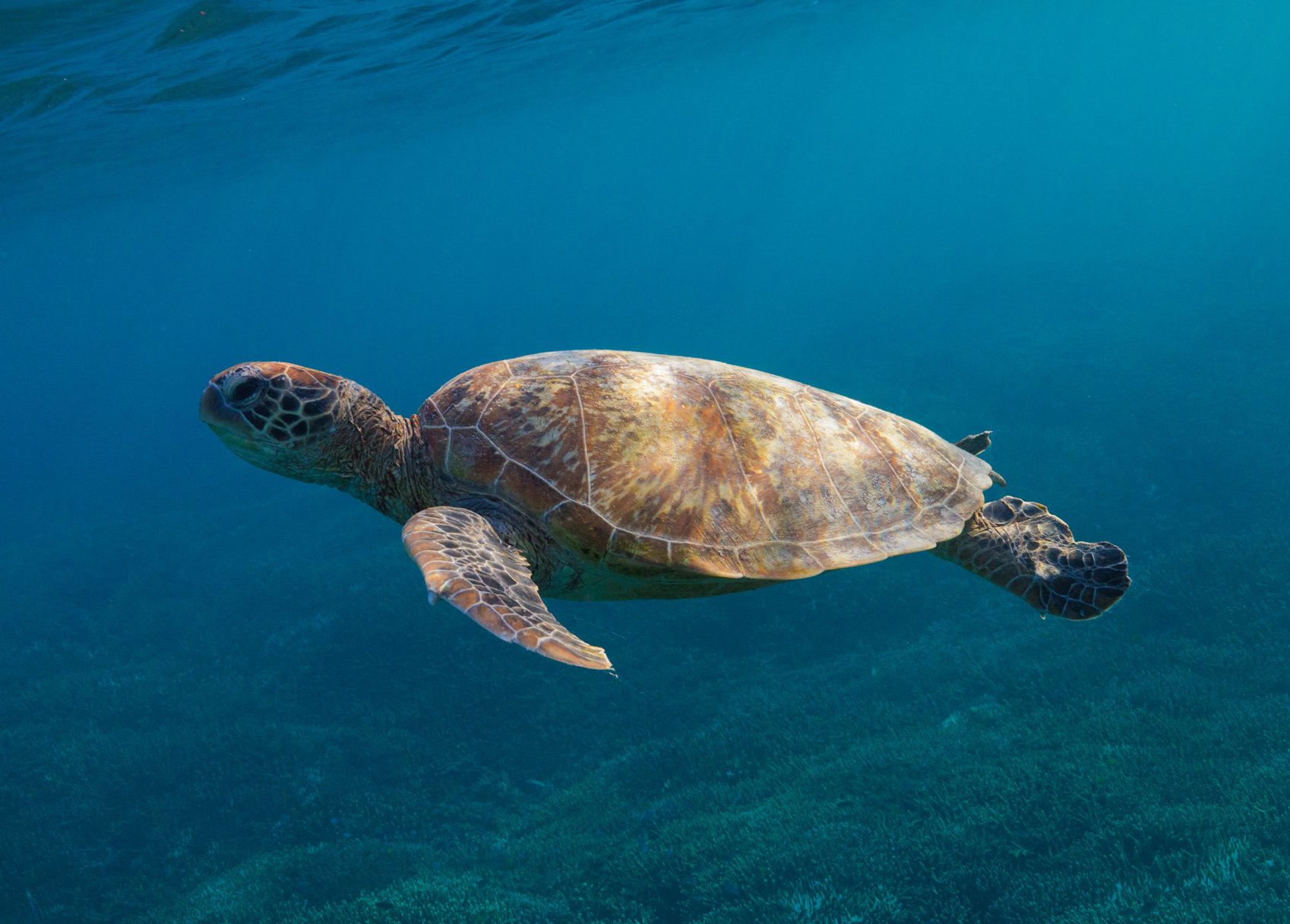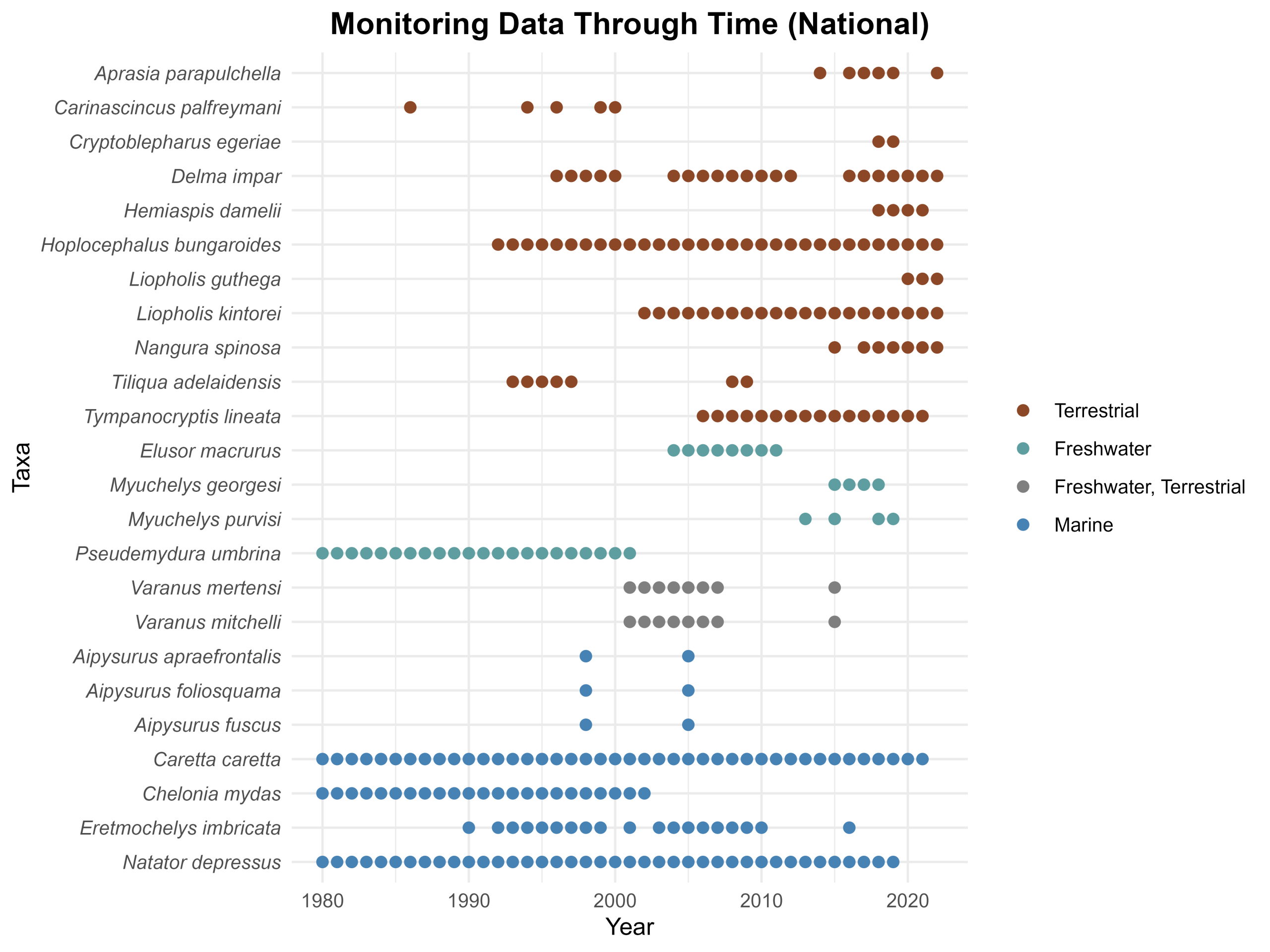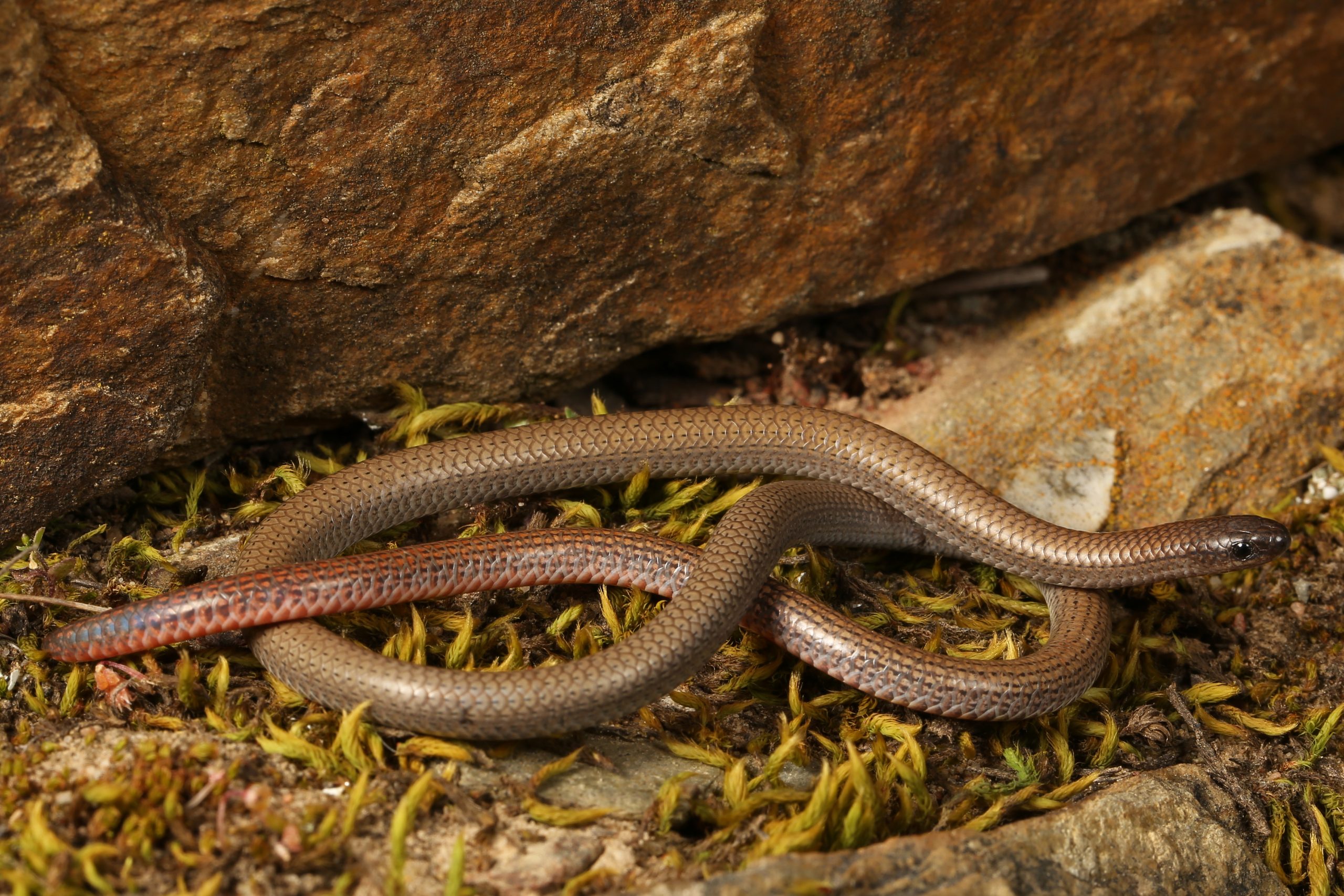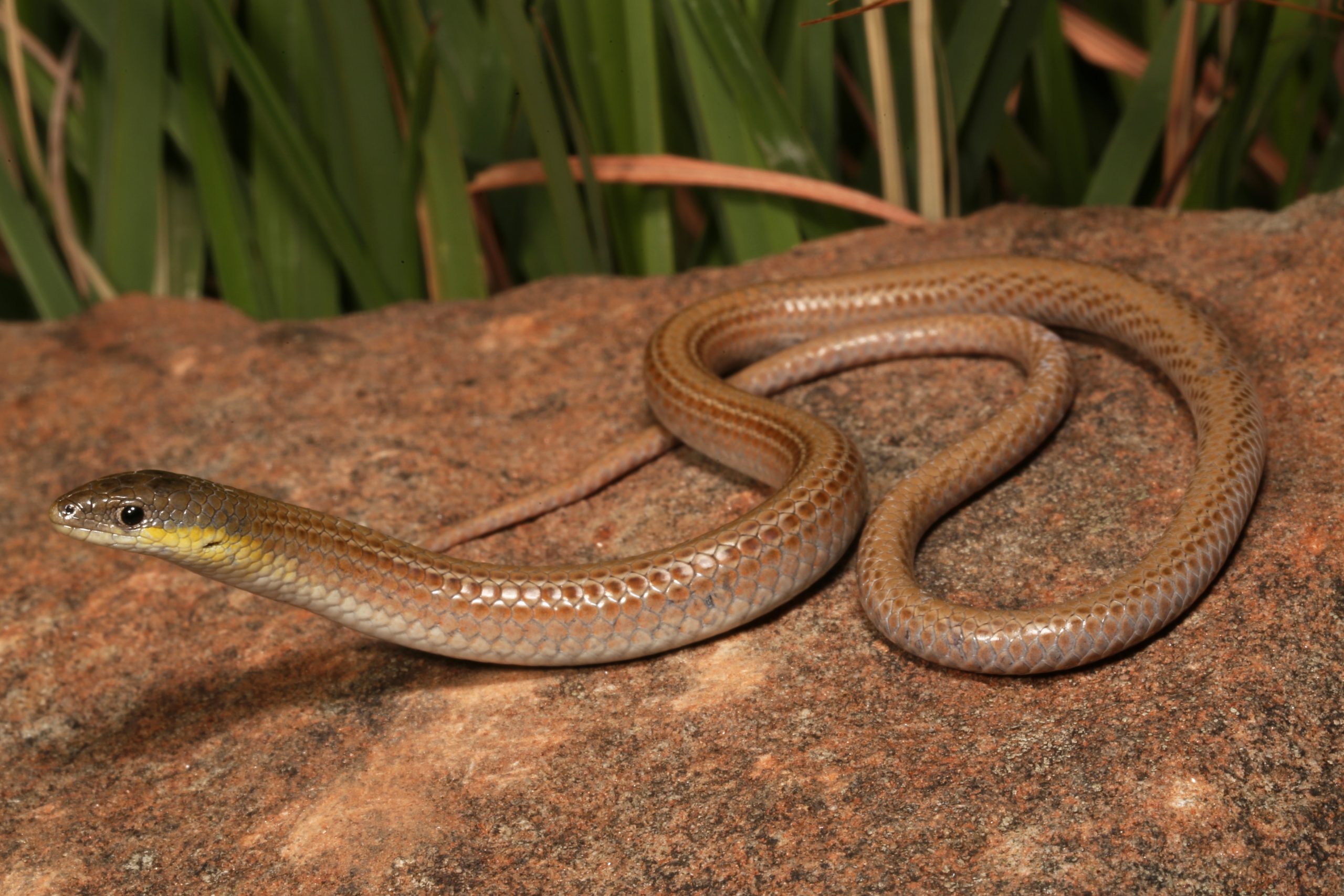25 November 2025
Australia’s first Threatened Reptile Index
The TSX brings together thousands of monitoring datasets from across Australia and releases trend updates annually. In 2025, along with updates to the existing groups (amphibians, birds, mammals, and plants), a pilot Threatened Reptile Index has been created. Key results are described below.

Green Sea Turtle (Chelonia mydas). Photo credit: Nicolas Rakotopare.

Key Results
Among the 24 taxa of threatened and near-threatened reptiles covered by the current dataset, relative abundance has declined by 94% on average from a reference year of 1985. A near-linear decline in the trend is apparent from 1985 through to 2005. While there has been some stabilisation after 2005, declines are ongoing, albeit at a slower pace. The shading in Figure 1 gives an indication of variability between taxa around this overall mean value. While it is clear that some species are declining faster than others, and that there is some temporal oscillation in the trend (i.e., around 2000 and again around 2019), the fact that this confidence interval does not cross 1 after the early 1990s and is not above 0.2 in 2022, provides strong evidence of a very large overall decline for the species and populations of reptiles for which data has been collated so far. The full set of trends for the pilot TRX can be explored using the TSX trend visualiser tool below.
TSX Trend Visualiser ToolFigure 1 (left): The pilot Threatened Reptile Index 2025, showing trends up to 2022 across all taxa. The brown line shows the average change in relative abundance compared to the baseline year of 1985 where the index value is set to 1. The shaded areas show the confidence limits.
REPTILE TAXA
TERRESTRIAL REPTILES
FRESHWATER REPTILES
MARINe REPTILES
EPBC LISTED TAXA
National priority taxa
IUCN LISTED TAXA
number of time series
number of sources
The National TRX Dataset
The national trends are based on 163 time series obtained for 24 taxa. Data are primarily from eastern Australia, although important long-term datasets were collated from Western Australia and the Northern Territory. Tasmania is represented by a single time series for a single taxon: the extraordinary Pedra Branca Skink (Carinascincus palfreymani) from the rocky island of Pedra Branca, some 30 km off the southern coast of Tasmania. South Australia is represented by 2 time series for the Pygmy Bluetongue (Tiliqua adelaidensis), an endangered skink that was thought extinct until its rediscovery in the 1990s.

Figure 2: The temporal coverage of monitoring data acquired for threatened and near-threatened reptiles across Australia. Note the significantly greater amount and temporal coverage of monitoring data for marine turtles, and the fact that monitoring data prior to 1990 derive almost exclusively from turtles.

Figure 3: A map showing where the threatened and near-threatened reptile data were recorded in Australia. The green dots indicate repeatedly monitored sites.

Figure 4: A dot plot showing the years for which monitoring data were available to compile the index. Each row represents a time series where a taxon was monitored with a consistent method at a single site in Australia.

Figure 5: The number of taxa (in black circles) and number of time series (in green circles) used to calculate the index for each year.
Additional Resources
PDF, 4.2MB

Hawksbill Sea Turtle (Eretmochelys imbricata).
Photo credit: Nicolas Rakotopare.
PDF, 4.3MB

Pink-tailed Worm-lizard (Aprasia parapulchella).
Photo credit: Geoff Heard.



